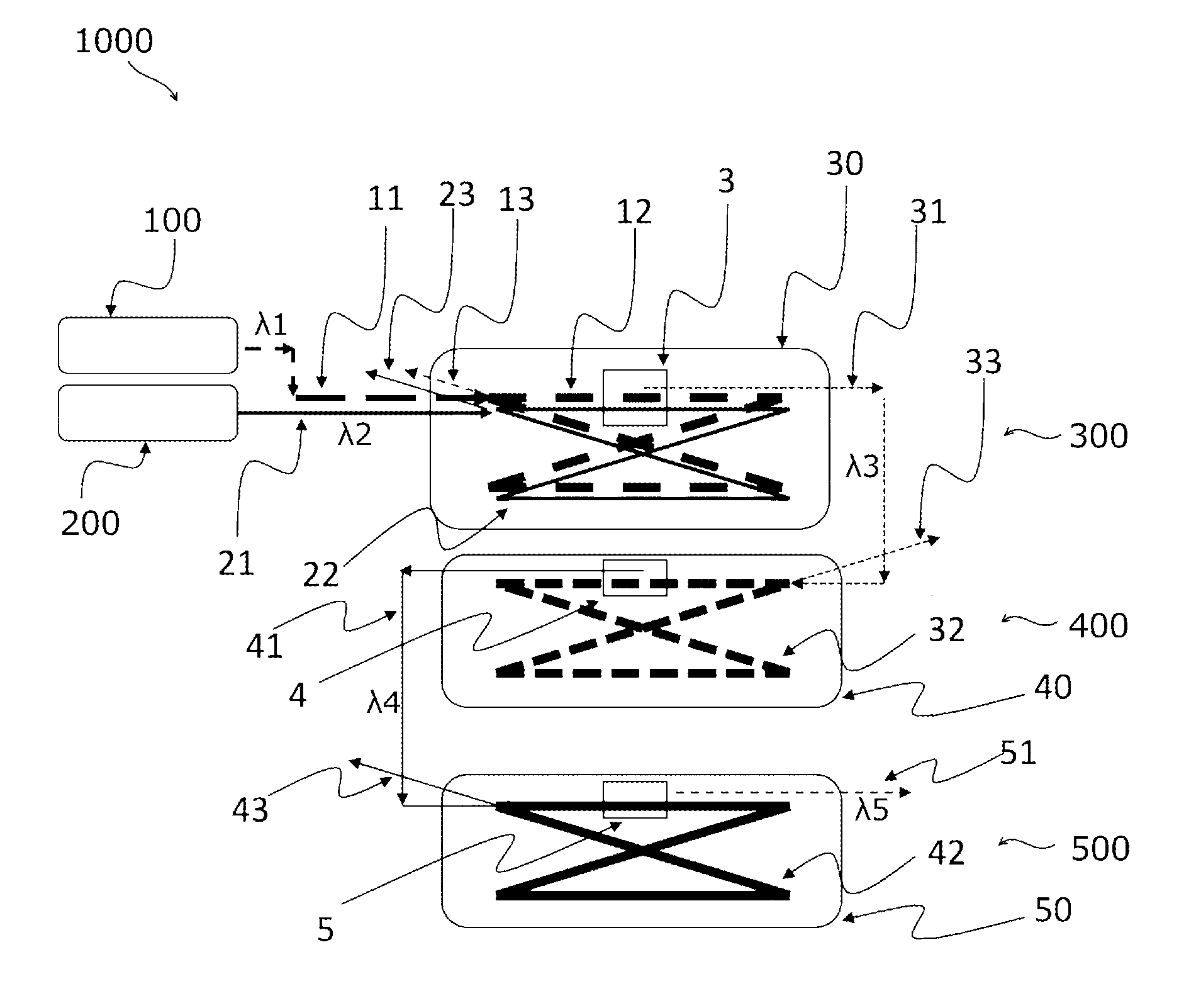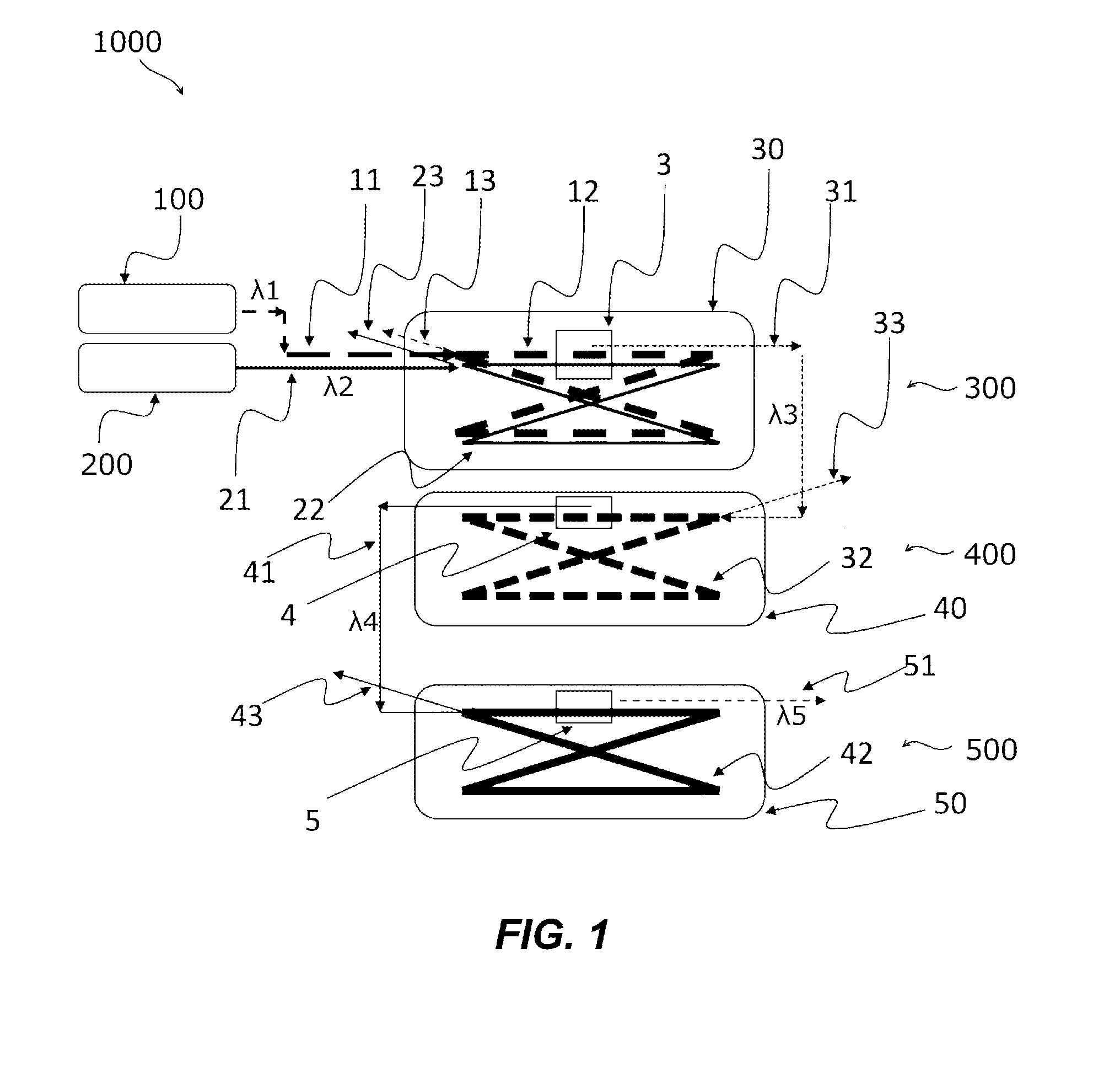Deep ultraviolet laser generation device and light source device
a laser generation device and laser technology, applied in the direction of optics, instruments, active medium materials, etc., can solve the problems of affecting and affecting the efficiency of the laser. , to achieve the effect of extending the life of the duv laser generation device, preventing damage or degradation of optical elements, and being highly practical
- Summary
- Abstract
- Description
- Claims
- Application Information
AI Technical Summary
Benefits of technology
Problems solved by technology
Method used
Image
Examples
Embodiment Construction
[0035]An embodiment of the deep ultraviolet (DUV) laser generation device of the present disclosure is described below by referring to the drawings. In the following description, common parts or elements are indicated by common reference numerals over the entire drawings unless otherwise noted. In addition, each element in the drawings is not necessarily drawn to scale. In the description of the embodiments provided herein, any light is either laser light or coherent light that has been amplified from laser while keeping its coherence, if not otherwise specified, and a wavelength range of any light is not limited to visible range and may include infrared or ultraviolet range.
[0036]FIG. 1 shows an example structure of a DUV laser generation device 1000 for generating DUV light using a sum-frequency mixing process and dual-stage second harmonic generation (SHG) processes from beams of light emitted by sources of the first wavelength λ1 and second wavelength λ2. A DUV light 51 at a wav...
PUM
| Property | Measurement | Unit |
|---|---|---|
| wavelength | aaaaa | aaaaa |
| wavelength | aaaaa | aaaaa |
| wavelength | aaaaa | aaaaa |
Abstract
Description
Claims
Application Information
 Login to View More
Login to View More - R&D
- Intellectual Property
- Life Sciences
- Materials
- Tech Scout
- Unparalleled Data Quality
- Higher Quality Content
- 60% Fewer Hallucinations
Browse by: Latest US Patents, China's latest patents, Technical Efficacy Thesaurus, Application Domain, Technology Topic, Popular Technical Reports.
© 2025 PatSnap. All rights reserved.Legal|Privacy policy|Modern Slavery Act Transparency Statement|Sitemap|About US| Contact US: help@patsnap.com



